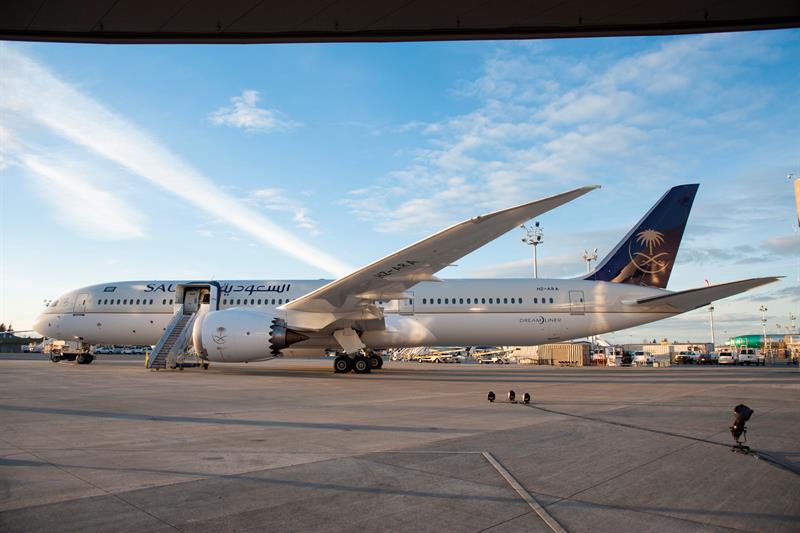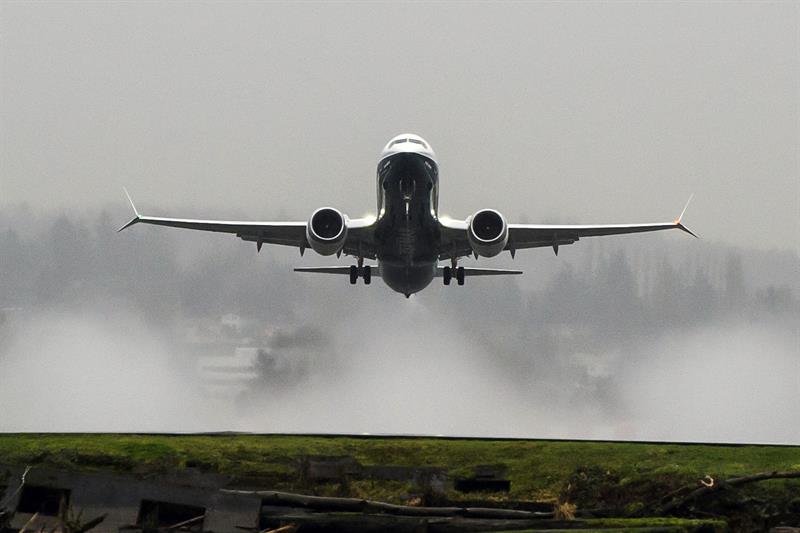Air travel continues to increase in popularity among the general public, and more passengers means more aeroplanes. According to a study of UK airlines commissioned by aerospace trade group ADS based on data provided by Ascend FlightGlobal Consultancy (‘The Great British Take Off’), passenger numbers will nearly double to 218 million in 2034, spurring the purchase of almost 1,000 aircraft between now and then, at a total cost of £75 billion. This might sound like a lot, but it is no more than 3% of global growth, in fact.
The prediction comes on top of an even larger growth for passenger numbers travelling to or from the UK on all flights: they are expected to rise by 165% in the next 20 years to 370 million, a compound annual growth rate of 2.7%, although it has to be said that it is still only about half of global growth estimates.
Not only UK demand is growing; Airbus estimates that 6,000 aircraft could be delivered to Europe in the next 20 years, corresponding to 20% of new deliveries during that period.
ADS argues that, in terms of the UK at least, the recent global recession and consolidation of operators – from 24 in 2004 to 10 in 2014 – has held back airline spending on aircraft. Indeed, the total UK fleet grew relatively little in that period: from 623 aircraft in 2003 to 701 in 2014.
But with forecasts of a doubling of GDP growth in the next 20 years (to 2.4%) compared with the last 10 years, “UK airlines are now set for a period of strong investment,” the organisation reports.
As well as replacing the 700 aircraft currently in service, UK airlines are expected to increase their fleet size, with the number of planes in the sky projected to rise to 1,110 by 2034 – a growth of 60%, compared with the previous 10 years. The report predicts three-quarters of aircraft delivered (641) will be single-aisle craft, and the rest wide-body jets. For short-haul flights, an interesting trend is in capacity of the aeroplanes being flown. While UK carriers offer on average 162 seats per plane, this is set to increase to 179. Doing so will require buying longer aeroplanes.
UK airlines take a relatively small percentage of the total passengers not from Europe or North America travelling to and from UK airports. However, with an increase in passenger numbers and an increase in market share, the ‘rest of the world’ group, including the Middle East, the Indian sub-continent and Asian regions, is the largest growing geographical segment for UK airlines to 2034. It is expected to amount to 41.5 million passengers in 2034, up from 14.1 million in 2014.

Boeing and Saudia recently celebrated the triple delivery of two Boeing 787-9 Dreamliners (shown at Boeing) and a 777-300ER (Extended Range)
MIDDLE EAST’S GROWTH SET TO CONTINUE
Turning to consider one of those growth regions, the Middle East, civil aviation forecasts for the next 20 years were published to coincide with the 2015 Dubai Airshow in November 2015. Admittedly, the UK and the Middle East have little in common, apart from the fact that passenger numbers are growing in both areas. However, their very differences help to throw trends in both countries into sharp relief.
Airbus says that travel to, from and within the Middle East has quadrupled in the past decade. And this growth is set to continue; both Airbus and Boeing predict large growth in aeroplane orders over the next 20 years (although in a global context the region still loses out to Asia, which is growing slightly faster, and has a much larger installed base).
Airbus predicts the Middle East will need 2,460 planes, of which 1,870 are for growth and 570 for replacement, to feed increasing passenger demand corresponding to 6% per year, every year. Total fleet size in that time nearly triples, to 2,950. But in contrast to UK domestic demand, most of the aircraft required (1,570, or 64%) are wide-body units.
John Leahy, Airbus chief operating officer – customers, says: “The impressive rise of the Middle East as the world’s aviation crossroads is in large part due to wide-body aircraft. Regional and domestic routes are also growing with our single-aisle products. Emerging economies with growing aspirational middle classes will continue to be a strong catalyst for air traffic growth.”
At the same time, domestic and regional passenger demand is predicted to grow by 6%, due to increasing urbanisation and a change in attitude to work and leisure travel.
In one particular recent example indicating increased demand, with the end of trade sanctions against the country, Iran’s state-owned airline was able to place an order for 118 aeroplanes with Airbus in January: 73 widebodies and 45 single-aisle craft.
Boeing, which announced it is setting up regional headquarters in Dubai in 2017, predicts even greater growth: 3,180 new aeroplanes by 2034, worth in total $730 billion. It describes the Middle East as a ‘key market’ for commercial airplanes, although its defence business is also expanding its regional footprint.
Twin-aisle aircraft will account for a little under half of the Middle East’s new aeroplane deliveries over the 20-year period, compared to 23% globally; for Boeing, this demand can be seen for orders and deliveries of the 787 and 777 series. There will be 1,410 single-aisle aeroplanes delivered.
Forecasts for global aeroplane passenger demand hover somewhere in between the two extremes of relatively slow growth of the UK (2.7%) and explosive growth in the Middle East and Asia. According to Airbus, overall passenger growth worldwide will be 4.6% per year until 2034. That leads it to predict that some 32,600 new aircraft (31,800, passenger sized 100 seats and above, and 800 freighters), worth $4.7 trillion, will be needed. If those orders come off, the world’s current fleet of 19,000 aeroplanes will have doubled. Boeing’s prediction is higher: it forecasts that 38,050 new aeroplanes will be needed by 2034, valued at $5.6 trillion. Its Current Market Outlook, 2015-2034, predicts passenger growth of 4.9% in a climate of world GDP growth of 3.1%.
That big picture of global demand should be music to the ears of the UK aerospace industry, whose 110,000 workers make most of their money from exports – they accounted for £26 billion out of £29 billion in overall revenue in 2014, according to ADS Group. And it makes the point that the UK aerospace supply chain should receive some of the benefits of the increasing global business: according to Boeing, 65% of the cost base of one aircraft is derived from suppliers across all tiers, although that figure is not specific to the UK, and may vary by type of aeroplane.
BOX:
737 MAX first flight
The 737 MAX 8, the first member in Boeing’s new family of single-aisle airplanes, had its first successful flight in January 2016. With the other three members of the 737 MAX 8 flight-test fleet currently in different stages of final assembly, the 737 MAX family remains on track for first delivery to Southwest Airlines of the USA in the third quarter of 2017. The 737 MAX will extend the Next-Generation 737 range advantage with the capability to fly more than 3,500 nautical miles (6,510 km), an increase of 340-570 nmi (629-1,055 km) over the Next-Generation 737. The plane features GE Aviation/SNECMA LEAP-1B engines and split winglets.

737 MAX
This article was published in a supplement to the March 2016 issue of Machinery magazine




